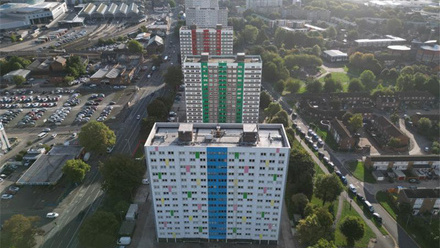Grenfell Tower fire – eight years on
On the anniversary of the tragedy, a tower block in Dubai, which is understood to have utilised ACM cladding similar to that found on Grenfell Tower, caught fire, though thankfully no lives were lost.
This should be a time to pause and reflect on the events of 14 June 2017, the overriding responsibility that Chartered Architectural Technologists and other design professionals have to ensure that buildings are safe and healthy, and the progress our profession has made in the intervening years.
Professional standards and competence
At the launch of their final report last year, the Grenfell Tower Inquiry team emphasised that the community was badly failed at almost every level by those responsible for ensuring their safety. This includes the design professionals involved in the refurbishment, whose work fell below expected standards of competence, quality, and professionalism.
CIAT recognises that professional competency and standards are of paramount importance. In 2022, CIAT was instrumental in the Quality Assurance Agency's (QAA) review of its Subject Benchmark Statement for Architectural Technology.
This document is a pivotal external reference that forms the foundation of CIAT's educational and professional standards. It underpins the Accreditation guidelines for Honours and Masters degree level programmes and directly informs CIAT's Professional Standards Competency Framework (PSCF) for Chartered Membership (a revised version of which was published in 2025). This ensures that both graduates and Chartered Architectural Technologists have demonstrated that they have acquired the critical knowledge and demonstrated the necessary skills, experience and behaviours for safe and effective practice.
Importantly, competence is not a "one and done" issue that can be ticked off upon qualifying. Instead, professionals must actively maintain their skills, knowledge, experience and behaviours, through Continuing Professional Development (CPD). CIAT is currently reviewing its approach to CPD for both individuals and Chartered Practices. You are always welcome to recommend topics or areas which may be of interest to the membership.
Advice and guidance
To support the membership in understanding and fulfilling their evolving professional and legal obligations, CIAT provides a range of guidance on technical and professional practice matters, as well as CPD resource directories. These can be found on CIAT's website, and are kept under continuous review.
Principal Designer Register
Chartered Architectural Technologists are ideally placed to undertake the Principal Designer (Building Regulations) role to ensure that buildings are both designed and constructed in line with regulations.
To give clients, other professionals and the public greater confidence, CIAT established a Principal Designer Register, aligned to and incorporating the principles of BS 8670-1:2024 - Competence frameworks for building safety - Core criteria, and PAS 8671 - Framework for competence of Principal Designers. This gives Chartered Architectural Technologists a means to demonstrate to both clients and insurers, their competence to act as Principal Designers.
If you are acting as Principal Designer, for the purposes of the Building Regulations, whether for Higher Risk or non-Higher Risk Buildings, you are strongly encouraged to join the CIAT PD Register.
This Friday, Netflix is launching a new documentary about the fire. If you watch it, you might want to reflect not only on how the tragedy was allowed to happen, but also how you and your practice could prevent such heartbreaking history being repeated.
As always, our thoughts at this time are with the families of all those who lost their lives that day.






